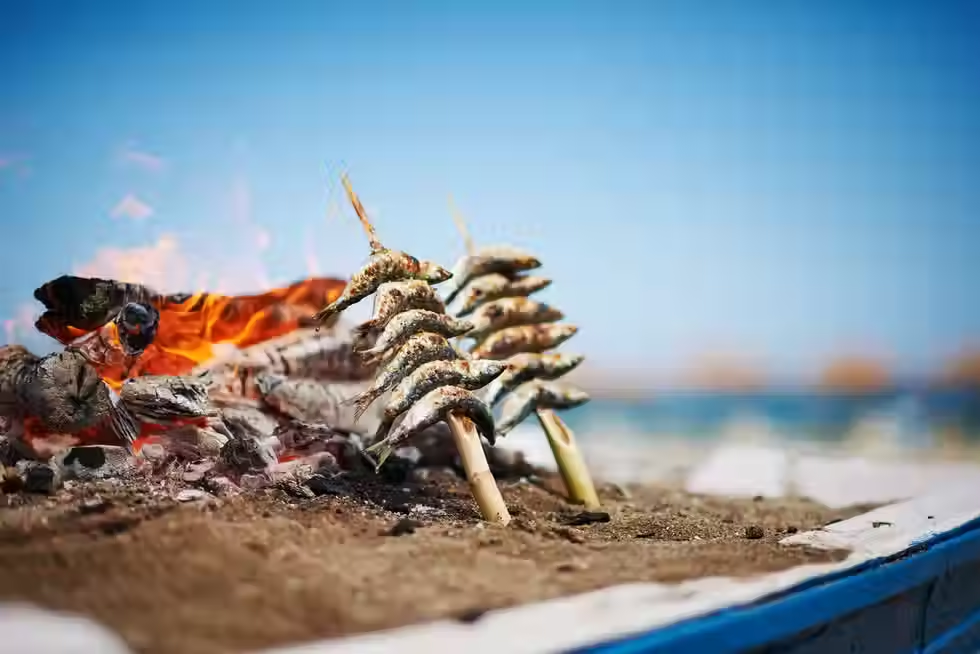Tenerife’s Traditional Food
- iris de neve
- Jul 27
- 4 min read
Tenerife’s traditional cuisine is primarily centred around the sea. This is evident not only because fish and seafood from the waters surrounding the Canary archipelago are prominently featured on restaurant menus and in homes.

The island’s culinary practices also draw inspiration from the ocean in that many ingredients originate from overseas. These come from the Iberian Peninsula and also from America. The connections between Tenerife’s traditional dishes and Canarian cuisine, in general, with that of various South American countries, are notably evident. Similarities can be seen with the cuisine of Venezuela and other Caribbean nations.
Tenerife’s traditional food does not showcase extravagance or intricate techniques. Instead, it emphasises simple methods focusing on locally-sourced ingredients such as fish, potatoes, pork, and cheeses.
Dishes are enhanced by the addition of flavorful sauces, or mojos. Some typical mojos are quite strong, like the well-known mojo picón [spicy] or mojo verde [green]. Below, we outline a few of the most common traditional Tenerife dishes and explain their preparation:
Las Papas Arrugadas

Papas arrugadas [wrinkled potatoes] are undeniably the unifying element of not only Tenerife's traditional dishes but all of Canarian cuisine. This straightforward dish features small, black potatoes grown on the archipelago. They are boiled with ample salt until the water evaporates, giving them their distinctive 'wrinkled' look.

They can be enjoyed on their own as an appetiser or served alongside meat or fish dishes.
And, naturally, they are often paired with a type of mojo. The most well-known mojos include:
Mojo picón [spicy mojo]: This sauce is made from vinegar, olive oil, red peppers, red (or cayenne) pepper, garlic, and salt. These ingredients are blended thoroughly to create a smooth sauce.
Mojo rojo [red mojo]: Similar to the mojo mentioned above, but prepared with rehydrated red peppers and pieces of bread.
Mojo de cilantro [coriander mojo]: This version highlights coriander as the main ingredient, along with garlic, olive oil, salt, and cumin.
Mojo negro [black mojo]: The key ingredient here is black garlic, which imparts a unique aroma and a very distinct flavor to the sauce.
El Gofio

Instead of being a standalone dish, gofio serves as the foundation for many traditional dishes in Tenerife and the Canary Islands overall. The term gofio refers to a type of corn or millet flour, which is toasted using a traditional method. Gofio can also be made from other grains, such as wheat, rye, and even quinoa.
The flour is turned into a mash that can be either sweet or savoury, depending on the type of dish it accompanies. The most common examples include:
Gofio escaldado: This is prepared by dissolving the flour in a broth, typically fish stock, but it could also be vegetable stock or even the water used to boil potatoes.
Puchero: The traditional stew, widely found throughout the Iberian Peninsula, has a Canary Island version that is served with gofio.
Bananas with gofio: These ingredients are combined into a thick paste, to which orange or lemon juice, or honey, is added.
Gofio biscuits: Known for their strong, distinctive flavor.
Almogrote

Almogrote is a variation of the Canary Island mojos. Its unique characteristic is that some of the vegetable ingredients, primarily peppers and garlic, are substituted with La Palma cheese. This cheese, originating from the island of La Palma, is made from goat's milk and has a strong, somewhat spicy flavour.
The outcome is a type of pâté that can be enjoyed on its own (spread on bread, for instance) or served as a complement to meat dishes or, naturally, the popular papas arrugadas.
Sancocho

Sancocho is likely the most delicious of the traditional dishes from Tenerife. It is a type of stew made with salted fish like wreckfish, blue butterfish (a variety of bonefish), or sea bass, combined with sweet potato, olive oil, and plenty of parsley.
Everything is cooked for different durations to ensure the fish remains intact, and it is served with a portion (pella) of gofio and each guest’s preferred type of mojo.
Ropa Vieja

Ropa vieja [literally, ‘old clothes’] exemplifies what can be described as ‘the art of cooking with leftovers’. This dish, a highlight of Tenerife’s traditional cuisine, is based on the puchero (stew or casserole) that utilises leftovers: cooking stock, chickpeas, potatoes, and chicken, pork, and beef.
These ingredients are chopped and added to sautéed onion, garlic, peppers, and tomatoes. Then, the chickpeas are incorporated, along with paprika, bay leaf, thyme, oregano, and more. Everything is cooked briefly, with a bit of the leftover stock added. Finally, the ropa vieja is served with plenty of chopped parsley and possibly some diced, fried potatoes.
Other traditional dishes from Tenerife
The panorama of Tenerife’s traditional food is completed with an extensive collection of recipes from which the following are never absent:
Wreckfish: This, along with parrotfish, is probably the most commonly found in Canary Island waters (and kitchens). Wreckfish is a type of grouper, and is generally grilled or barbecued and served accompanied by papas arrugadas and mojo.
Frangollo: One of the most typical desserts in traditional Tenerife and Canary Island cuisine. This is a type of gofio, a mash made up of corn flour, lemon, sugar, almonds and cinnamon. There are numerous variations, depending on the cook and the particular area of the Islands where it is made.
Canary Island cheese: The range of Canary Island cheeses is vast. Each of the seven larger islands has its particular flagship variety, often covered by a designation of origin. The most outstanding examples are the Majorero Cheeses from the island of Fuerteventura and those from La Palma.
Rapadura: Another classic dish of the Canary Islands (specifically, in this case, of La Palma), which has been assimilated into the typical cuisine of Tenerife. This is a cone-shaped dessert combining gofio with honey and eggs, and other ingredients which give the dish its various flavours (chocolate, coconut, almonds, etc.).


_edited.png)





Comments